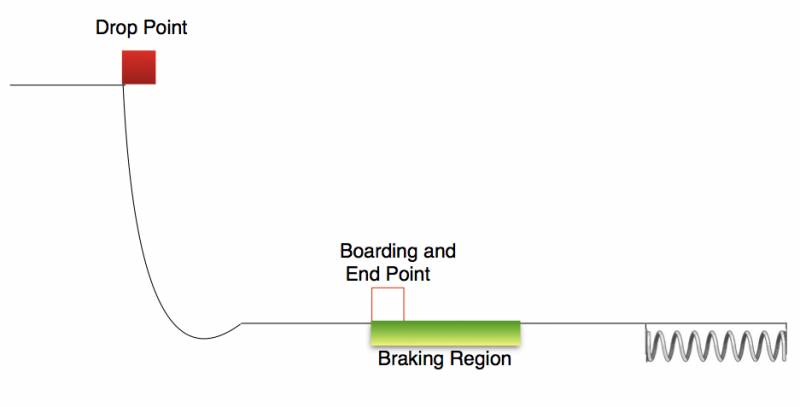Project 7: Energy and Avengers
Today, we are transitioning into talking about energy and are going to start small and examine energy from a few different scenarios. These scenarios highlight the idea of choosing systems and will ask you to analyze each problem from two different systems. This will hopefully help you all compare and contrast these two different approaches to solving energy problems.
Project 7: Learning Concepts
- Relationship Between Force and Energy - Work
- Choosing a system
- Conservation of Energy
- Potential and Kinetic Energy
Scenario 7a: Iron Man speeds up a train
Iron Man encounters a train (mass = $1.35 \times 10^6$ kg) that has run out of fuel 1000 m before the train station. He decides to put on his blasters (which have a force of 20 MN), and he pushes the train for 500 m to get it up to speed. He's hoping that friction for the rest of the way will slow down the train by the time it arrives at the station. Assuming the train's wheels are locked, Iron Man is able to overcome static friction and the coefficient of kinetic friction for steel on steel is $\mu_k = 0.74$.
Choice 1: System = train + iron man + Earth
Choice 2: System = train
1. For each choice of system above, answer the following questions:
- Is energy conserved in the system? Why/why not?
- Is work done on the system? Is it positive or negative? How do you know?
- Draw the energy bar charts for the scenario.
- Draw an energy vs time graph showing all energies, including the total system energy.
2. Pick a system to calculate how fast the train will going when it gets to the station.
3. Which system did you choose for your analysis? Why?
Scenario 7b: Hawkeye Launches Arrow
Hawkeye is standing the edge of a tall building (80 m) and needs to fire an arrow into the sky as a warning to the other avengers. He releases the arrow with an initial speed of 50 m/s at an angle of 60 degrees. Consider this situation from the instant after the arrow is launched.
Choice 1: System = Arrow + Earth
Choice 2: System = Arrow
1. For each choice of system above, answer the following questions:
- Is energy conserved in the system? Why/why not?
- Is work done on the system? Is it positive or negative? How do you know?
- Draw the energy bar charts for the scenario.
- Draw an energy vs time graph showing all energies, including the total system energy.
2. Pick a system to calculate the maximum height that the arrow will reach in the sky.
3. Which system did you choose for your analysis? Why?
Project 7: Breakneck - Thursday -- The new roller-coaster at Michigan's Adventure
You are a team of engineers and scientists who are in the process of designing Michigan's Adventures exciting a new attraction “Breakneck”. This ride involves a roller-coaster-like car that can hold 8 passengers, with a mass of 700 kg. This car starts by effectively free falling 60m. The track curves at the bottom so that the car can slide up an 8-m-high hill before hitting a horizontal straightaway 50m long. In the middle of the straightaway is a section of track that is used to slow the car down. You can have the car brake over any or all of the 10m length of that section.
Then at the end of the straightaway, a spring-like device hooks under the car. This device changes the car’s direction just in time to prevent it from apparently falling over the end of the track, sending it back over the braking section again, stopping neatly at the end of the braking area. The car should stop at the end of the braking section, on the way back towards the launch pad.
Your tasks are (a) to decide on an appropriate braking force and length of the braking region needed on the straightaway to stop the car at the right location, and (b) the effective spring constant of the turnaround device. The braking system is electromagnetic in nature, and can provide any specified braking force. The car has special accelerometers mounted which relay that information, and adjust the braking force to provide the acceleration you request. The most important piece of information for these devices is that a person can safely sustain accelerations of 3-4 “g’s” for a brief time, but not more than that.

